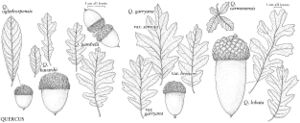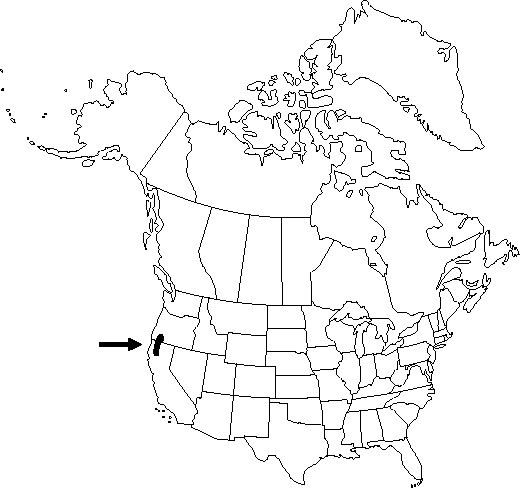Difference between revisions of "Quercus garryana var. breweri"
Fl. Calif. 1(2): 354. 1909.
FNA>Volume Importer |
imported>Volume Importer |
||
| (5 intermediate revisions by 2 users not shown) | |||
| Line 12: | Line 12: | ||
}}{{Treatment/ID/Special_status | }}{{Treatment/ID/Special_status | ||
|code=F | |code=F | ||
| − | |label= | + | |label=Illustrated |
}} | }} | ||
| − | |basionyms={{Treatment/ID/ | + | |basionyms={{Treatment/ID/Basionym |
|name=Quercus breweri | |name=Quercus breweri | ||
|authority=Engelmann | |authority=Engelmann | ||
| + | |rank=species | ||
| + | |publication_title=in S. Watson, Bot. Calif. | ||
| + | |publication_place=2: 96. 1880 | ||
}} | }} | ||
|synonyms= | |synonyms= | ||
| Line 42: | Line 45: | ||
-->{{#Taxon: | -->{{#Taxon: | ||
name=Quercus garryana var. breweri | name=Quercus garryana var. breweri | ||
| − | |||
|authority=(Engelmann) Jepson | |authority=(Engelmann) Jepson | ||
|rank=variety | |rank=variety | ||
| Line 56: | Line 58: | ||
|publication title=Fl. Calif. | |publication title=Fl. Calif. | ||
|publication year=1909 | |publication year=1909 | ||
| − | |special status=Endemic; | + | |special status=Endemic;Illustrated |
| − | |source xml=https:// | + | |source xml=https://bitbucket.org/aafc-mbb/fna-data-curation/src/2e0870ddd59836b60bcf96646a41e87ea5a5943a/coarse_grained_fna_xml/V3/V3_1024.xml |
|genus=Quercus | |genus=Quercus | ||
|section=Quercus sect. Quercus | |section=Quercus sect. Quercus | ||
Latest revision as of 21:45, 5 November 2020
Shrubs, spreading and clonal, to 2-3 m, multitrunked. Twigs reddish, sparsely puberulent, often glabrate, without spreading hairs. Buds reddish brown, ovoid, 2-5 mm, glandular-puberulent. Leaf blade abaxially light green, velvety to touch, sparsely to densely covered with erect (2-)4-6-rayed hairs 0.2-0.5 mm.
Phenology: Flowering late spring–early summer.
Habitat: Montane conifer forests and chaparral
Elevation: 1400-1900 m
Discussion
Quercus garryana var. breweri appears to be endemic to the Siskiyou region of California and Oregon; it may extend into the northern Sierra Nevada of California. Specimens sometimes placed here from the Coast Ranges of northern California are probably shrubby forms of Q. garryana var. garryana or hybrids between the latter and Q. durata (see treatment). It should be noted that key characteristics separating Q. garryana vars. breweri and semota from var. garryana (clonal habit, smaller, glabrate, brown buds, montane habitat of the former two varieties) suggest a relationship of these two varieties with the Rocky Mountain Q. gambelii. The latter species has smaller fruit than Q. garryana, but the extent of variation in this characteristic in Q. garryana var. breweri is unknown.
Selected References
None.

